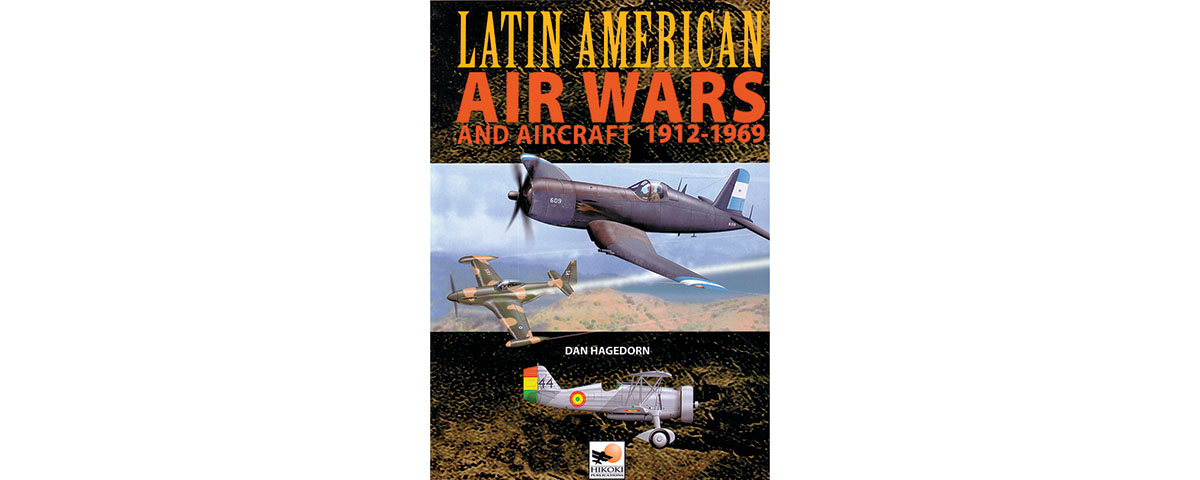Latin American Air Wars and Aircraft 1912-1969
by Dan Hagedorn, Hikoki Publications, East Sussex, England, 2006, $59.95.
Dan Hagedorn, curator for Latin American Aviation at the National Air and Space Museum, spent more than 15 years preparing this unusual reference work on military aviation in all of the countries in Central and South America before 1969. As readers of this comprehensive history will quickly conclude, the author has made a landmark contribution to aviation history, with more than 400 photos and color art to back up the text.
The first production aircraft designed and built for combat use in Latin America were indigenously designed and fabricated planes produced by the Tallares Nacionales de Construcciones Aeronauticas in Mexico during the revolutionary period before World War I. Most aircraft in the other Latin American countries were North American, British, French, Italian and German products. However, as Hagedorn points out, some planes were often “bizarre and challenging to buy, transport, erect, service and maintain.” The aircraft had frequently been obtained from surplus resources and were not in first-class condition.
Some trainers and transports were subsequently transformed into fighters and bombers. The North American AT-6 proved to be especially popular with the Cuban, Mexican and South American air forces.
What is particularly striking is that every nation south of the U.S. border has had an air force for many years and has become engaged in operations against its neighbors or in quelling revolutions inside its own borders. Of special interest to Americans is the CIA-backed invasion of Guatemala in 1954 and the crucial role of aviation in the Bay of Pigs operation to dislodge Fidel Castro, which Hagedorn believes is “one of the most significant aerial encounters of the first 100 years of manned flight in Latin America.”
Protection of the Panama Canal and its sea approaches receives special mention because of the concern that the Axis powers might attempt to put it out of commission. The U.S. Sixth Air Force was formed there with fighters, bombardment, observation and transport aircraft. The latter included a three-engine Junkers Ju-52/3m (designated by the U.S. Army Air Forces as a C-79), which had played a role in the 1941 war between Ecuador and Peru, and the one and only Boeing XB-15.
Other types acquired by Latin American countries that have intrigued aviation historians include a Fiat B.R.20 operated by Venezuela, a number of Caproni Ca-135s flown by Peruvians and Focke Wulf Fw-58B-2s used by the Brazilians. American aircraft such as Consolidated PB4Y-1 Liberators and Douglas B-18s were especially popular for submarine patrol in the Southern Hemisphere.
In the latter years of the 1960s covered by Latin American Air Wars, North American P-51 Mustangs and Douglas C-47s were widely used by almost all the Latin American countries. Jet-powered aircraft entered many of these inventories when the Argentinians acquired the first Gloster Meteor F.4 in 1955 and North American F-86s in 1958.
In the book’s preface, Hagedorn invites readers to look at additional material on each chapter via the publisher’s Web site. The easily downloaded text provided through this facility includes more extensive background about the political conflicts and historic air battles that are covered in the book. It’s an opportunity that will appeal to those who want more depth on a specific nation’s military air history. One of the most fascinating of the Web site chapters contains detailed information about the Bay of Pigs air war in 1961 and the use of Hawker Sea Furies and Lockheed T-33s by the pro-Castro forces.
Originally published in the September 2007 issue of Aviation History. To subscribe, click here.





